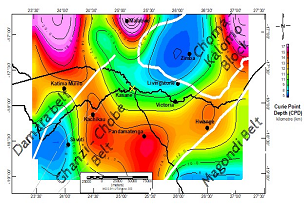Liza Sarazin, senior director – brand and marketing at Seequent, The Bentley Subsurface Company, explains how Botswana International University used detailed geotechnical analysis to bring geothermal energy to Africa
In a drive to keep up with population growth and meet social and economic goals, Botswana is seeking renewable sources of energy. As part of that initiative, the Botswana International University of Science & Technology (BIUST) started exploring geothermal hot spots in the country to evaluate the potential for harnessing heat for power generation.
One of these hot spots is the Kasane Hot Spring in northeast Botswana. With discharge temperatures between 43 and 50 degrees Celsius, the hot spring has the potential to provide consistent baseload power that is not dependent on seasonal rainfall variations or daily weather conditions. However, geothermal exploration can be a long, risky, and expensive process.
BIUST researchers knew that successful geothermal exploration requires specialised geological, geochemical, and geophysical surveillance to effectively drill steam wells. For the Kasane Hot Spring analysis, they needed to build, maintain, and communicate conceptual geological models. However, integrating surface and surbsurface maps, merging geophysical grids, and applying the potential power flows to existing grid systems had previously required using multiple sets of software, which could potentially introduce errors. Therefore, BIUST needed an integrated solution to more accurately determine how the hot spring could be used to provide renewable energy.
A longtime user of Oasis montaj, an application from Seequent, BIUST realised the newest version of the application could visualise, analyse, and integrate all needed geoscience data without the need for different applications. University officials used Oasis montaj to image the area within and around the hot spring to more than 22 km belowground. Using Curie point depths (CPD) and aeromagnetic data, the team computed the geothermal gradient and subsurface crustal heat.
Discovering strong potential
As a result of BIUST’s analysis, they determined that Kasane Hot Spring shows shallow CPD values, a high geothermal gradient, and a high heat flow, indicating the area has strong potential to be a reliable geothermal energy source. Though BIUST is continuing to study the hot spring to gain a deeper understanding of its capabilities, it could become a clean, renewable source of energy that would replace aging and polluting power infrastructure in the region and create new investment opportunities while accommodating increased power demand.
Conclusions from the project included:
• Kasane Hot Spring in Botswana has the potential to provide sustainable, reliable geothermal energy to support population growth.
• The potential new geothermal energy source could help bring new investment opportunities to Botswana while replacing aging and polluting power infrastructure.
“While Botswana has undeniably good geothermal potential that can be utilised to alleviate the country’s current energy limitations, so far this potential has remained completely untapped. Our results might identify Kasane hot spring as the most suitable location for geothermal project implementation in Botswana,” commented Calistus Ramotoroko, teaching instructor at BIUST.





















